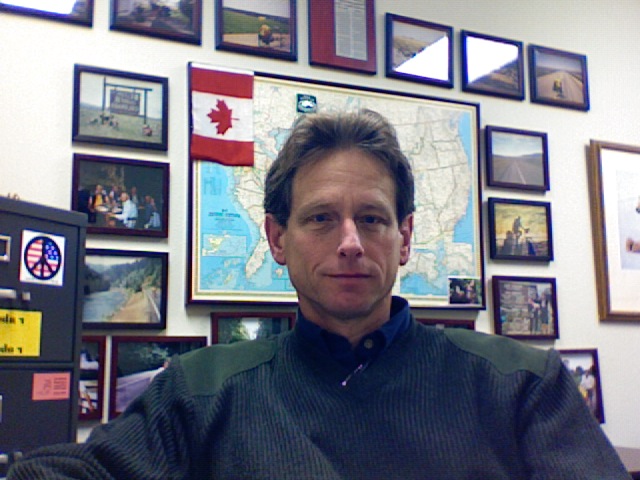In a radio speech the day Nagasaki was obliterated, Truman told his American audience, "The world will note that the first atomic bomb was dropped on Hiroshima, a military base. That was because we wished in this first attack to avoid, insofar as possible, the killing of civilians."
The world took note that as many as 140,000 civilians were killed instantly or later died of injuries and radiation poisoning at Hiroshima.
To prevent Iran from becoming a nuclear power in the Middle East, President Bush has tasked the Pentagon with developing plans for a surgical strike on Iran's nuclear facility at Natanz, which is buried under 75 feet of earth and rock.
In keeping with our country's "humanitarian" effort to minimize civilian casualties in a nuclear strike, "low" yield tactical nuclear weapons, such as the B61, have been reclassified by the Pentagon as "safe for the surrounding civilian population." Because these weapons are now considered as "safe" as conventional munitions, their use is at the discretion of the theater commander. Presidential approval is no longer needed to start a nuclear war.
But the world should note that America has been waging a "low yield" nuclear war that has been killing civilians for almost two decades. Missing from this war are mushroom clouds and very loud booms. Present is nuclear fallout with its insidious long-term effects on both combatant and civilian and its perpetual contamination of land and water resources.
The United States began waging nuclear war in Kosovo in 1990 and has continued through the Persian Gulf War, Bosnia, Afghanistan, and Iraq. The "nuclear tipped" weapon of choice in each of these theaters of war has been depleted uranium (DU) munitions.
To build atomic bombs, and later to fuel nuclear reactors, the U.S. began enriching uranium ore mined from the earth's surface. In the process, the fissionable isotope Uranium 235, which accounts for 0.7 percent of the ore, is extracted, while the remaining 99.3 percent of the unfissionable isotope, Uranium 238, becomes "low yield" radioactive waste. By the middle of the 1950s there was approximately 600,000 tons of DU waste being stored at various facilities throughout the United States.
Depleted uranium has several properties that attracted the U.S military-industrial complex. It is cheap and plentiful and 1.7 times denser than lead, which makes it an idea metal for armor piercing bullets and tank rounds, armor plating on tanks, and ballast for cruise missiles and aircraft. Consequently, much of what has been dropped, launched, fired or destroyed during combat operations involving the U.S. and its allies in the last two decades is radioactive and will remain so for as long as the Earth exists.
When a "nuclear tipped" DU tank round, containing 10 pounds of uranium, strikes the armor plating of an enemy tank, it ignites and burns through to the interior, setting off the tank's ammunition. The resulting fire and explosion creates a radioactive dust cloud of submicroscopic insoluble uranium oxide particles, which is suspended in the air and ultimately settles on the ground to be inhaled and ingested by combatant and civilian alike.
Depleted uranium, though it sounds safe, is still one-third as radioactive as the original natural uranium, and will lose only half of its radioactivity in 4.5 billion years-the age of the solar system. Depleted uranium emits alpha and gamma radiation, which can be mutagenic and carcinogenic in the human body and result in cancers and birth defects. It is a nuclear-plated Trojan Horse that continues to kill civilians long after the fighting has moved on.
In April 1991, only one month after the end of the first Gulf War, a secret report prepared by the United Kingdom Atomic Energy Authority was leaked to The Independent of London. The report described the hazards of the radioactive dust from expended DU munitions and destroyed DU-armored tanks getting into the food chain and water supply. The report warned that 40 tons of radioactive DU debris left on the battlefield could, in the decades ahead, cause as many as 500,000 civilian deaths.
The U.S. left behind 375 tons of DU debris in the Gulf War, 800 tons in Afghanistan, and 2,200 tons during the current invasion and occupation of Iraq.
Children are particularly susceptible to DU poisoning and the resulting cancers due to a higher absorption rate in their blood, which is instrumental in building bones and soft tissue. In March 2001, Dr. Aws Albait, a physician practicing in Baghdad from 1990 to 1999, reported a 12-fold increase in leukemia and lymphomas in Iraqi children and a six-fold increase in adults during that decade. In 2004 it was estimated that children under the age of five accounted for 56 percent of all cancer patients in Iraq, compared with 13 percent 15 years ago.
It is not only Iraqi children who are the victims of our perpetual nuclear war, but American children as well. A Veteran's Administration study of 251 Gulf War veterans in Mississippi found that 67 percent of their children born since the war had birth defects and severe illnesses. In addition, 90,000 veterans suffer from the chronic, debilitating effects of the Gulf War Syndrome, which many researchers believe may be related to exposure to DU fallout.
(Note: You can view every article as one long page if you sign up as an Advocate Member, or higher).





